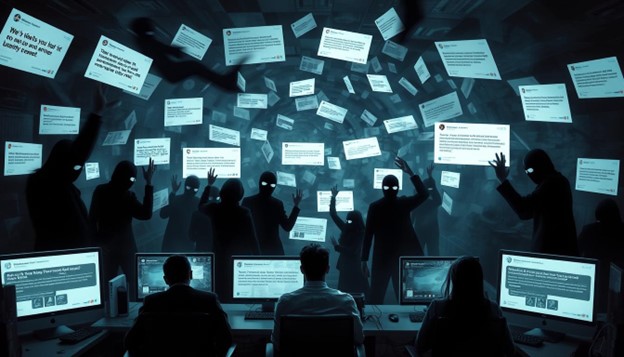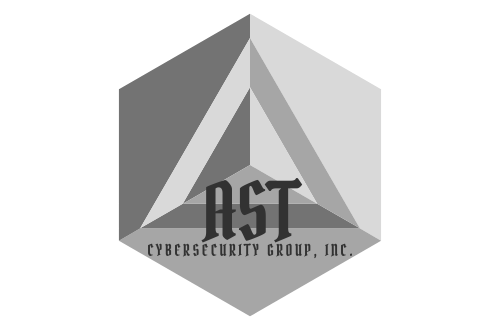Cyberbullying isn’t just for kids; it can happen at work too. It makes the workplace toxic and affects everyone. By stepping up as a bystander, you can change the workplace culture for the better.
When you understand the power of bystander intervention, you help create a supportive work environment. This article will cover the basics of cyberbullying. You’ll learn what it is, how to spot it, and how to deal with it. Let’s work together to make workplaces safer and more empowering.
Key Takeaways
- Understanding the nature of cyberbullying in the workplace.
- The importance of your role in bystander intervention.
- Recognizing the common behaviors of cyberbullies.
- Identifying the signs of victims of cyberbullying.
- Strategies for creating a supportive work environment.
- Advocating for workplace empowerment to challenge negative behaviors.
Understanding Cyberbullying in the Workplace
It’s key to understand what cyberbullying is, especially in work settings. It’s when someone uses digital tools to bully or intimidate others. This can happen through emails, social media, or messaging apps. It’s a big problem for both workers and bosses.
What is Cyberbullying?
Cyberbullying is more than just mean jokes. It’s a range of aggressive actions done online. The U.S. Equal Employment Opportunity Commission says it’s a big issue. It can really hurt someone’s feelings and make their job harder.
The Impact of Cyberbullying on Employees
Cyberbullying can really mess with someone’s mind and work life. It can lead to stress, sadness, and lower job happiness. People might not want to work as well or even miss work.
A study by the Workplace Bullying Institute found many people think about quitting because of it. It can make the whole team feel bad, making it hard to work together.
Recognizing the Signs of Cyberbullying
Spotting cyberbullying signs is tough but key for a safe work place. Cyberbullies often hide in plain sight. Knowing their tricks helps you protect everyone.
Common Behaviors of Cyberbullies
Cyberbullies use many bad tactics. Spotting these can help stop and fix problems. Here are some common ones:
- Gossiping: Spreading rumors or personal info to hurt someone’s image.
- Exclusion: On purpose, leaving someone out of chats or events, making them feel alone.
- Persistent belittlement: Constantly making fun of someone, causing emotional pain.
- Public humiliation: Sharing embarrassing stuff about someone online or in groups.
How to Identify Victims of Cyberbullying
It’s important to spot cyberbullying victims to help them. Look for these signs:
- Changes in behavior: Suddenly not wanting to talk or acting differently can mean trouble.
- Decline in performance: Doing worse at work might show they’re upset.
- Increased absenteeism: Asking off a lot or missing work without saying can be a sign of problems.
- Social engagement shifts: Not wanting to join in team stuff might mean they feel left out or scared.

Knowing these signs lets you help. Spotting cyberbullies and finding victims helps make a better work place for all.
Stop Cyberbullying at Work: Your Role as a Bystander
You play a key role in fighting cyberbullying at work. As a bystander, your actions can change harmful situations. It’s crucial to speak up for those affected and for a respectful work culture. Knowing your moral duty can give you the courage to act.
The Importance of Speaking Up
Intervening as a bystander is vital in stopping cyberbullying. Not speaking up can make a bad work environment worse. By speaking out, you show that harmful actions won’t be accepted. This makes victims feel supported and valued, creating a safer workplace.
How to Approach the Situation
Dealing with cyberbullying can be delicate. Here are some tips for effective intervention:
- Be Empathetic: Show understanding of the victim’s feelings. Your kindness can make a big difference.
- Document Evidence: Keep records of cyberbullying for when you talk to management or HR.
- Engage Constructively: Talk to both the victim and the bully with care. Use words that help start a conversation, not a fight.
- Encourage Reporting: Tell the victim to report the bullying to the right people. Make sure they know they’re not alone.
- Create a Support Network: Work with colleagues to help those affected by bullying. Building a support system is important.
Using these strategies can make you a better bystander. Your actions are crucial in stopping cyberbullying and making the workplace better.
| Action | Purpose | Outcome |
| Speak Up | Address cyberbullying directly | Creates awareness and accountability |
| Listen to Victims | Provide support and validation | Encourages sharing of experiences |
| Report Incidents | Inform HR or management | Helps initiate official response |
| Support Policies | Advocate for anti-bullying policies | Encourages a safe work culture |
Strategies to Empower Bystanders
Empowering bystanders in the workplace is crucial for a supportive environment. When bystanders can act, they help address cyberbullying. Organizations need to focus on open communication and intervention.
Creating a Supportive Environment
A supportive workplace builds trust among employees. When people feel safe, they’re more likely to report cyberbullying. Companies should encourage speaking up without fear.
They can do this by having clear reporting procedures and regular team meetings. This helps create a safe space for everyone.
Training and Resources for Employees
Training employees is essential for empowering bystanders. Workshops and seminars teach staff to recognize cyberbullying and how to respond. Investing in resources like expert-led sessions gives employees the tools they need.
By regularly offering these training opportunities, companies can stay proactive against cyberbullying.
Conclusion
As we finish talking about stopping cyberbullying at work, it’s key to stress the need for everyone to act together. Knowing the signs of cyberbullying and seeing its harm is the first step to making things better. By building a culture of respect and support, you can turn your workplace into a place of productivity and friendship.
Think about what you’ve learned in this article. Stopping cyberbullying is not just up to managers, but also to you and your coworkers. Your voice is important in this fight. By speaking up and supporting those who are bullied, you can make a big difference.
It’s time to take action. Make a promise to yourself to spot, tackle, and stop cyberbullying at work. By standing together and supporting each other, you can help solve this problem. Let’s work towards a workplace where everyone is respected and feels safe.
FAQ
What is workplace cyberbullying?
Workplace cyberbullying is when someone uses digital tools to bully another employee. This can happen through emails, social media, or messaging apps. It makes the workplace toxic, hurting morale and productivity.
How can I identify the signs of cyberbullying in my workplace?
Look for changes in an employee’s behavior. This includes them pulling away from others, doing poorly at work, or acting strangely. Signs like constant gossip, being left out, or mean comments online are clues.
Why is bystander intervention crucial in stopping cyberbullying?
Your help can really change things. By speaking up, you support the bullied and help create a better work place. It shows everyone that bullying won’t be tolerated.
What strategies can I use to approach a situation of cyberbullying?
Start by being kind and understanding. Talk to the people involved privately. Focus on the bad behavior, not personal attacks. Encourage everyone to talk openly about it.
Support the victim and suggest they tell management if they feel safe. This helps everyone feel heard and valued.
How can we create a supportive environment to prevent cyberbullying?
Make your workplace open and respectful. Use clear communication and be transparent. Training programs can teach employees how to spot and stop bullying.
This way, everyone knows how serious bullying is and can help prevent it.
What resources are available for training employees on cyberbullying awareness?
There are many resources and training programs out there. Look for workshops, online courses, and sessions led by experts. These help employees understand and fight cyberbullying.

